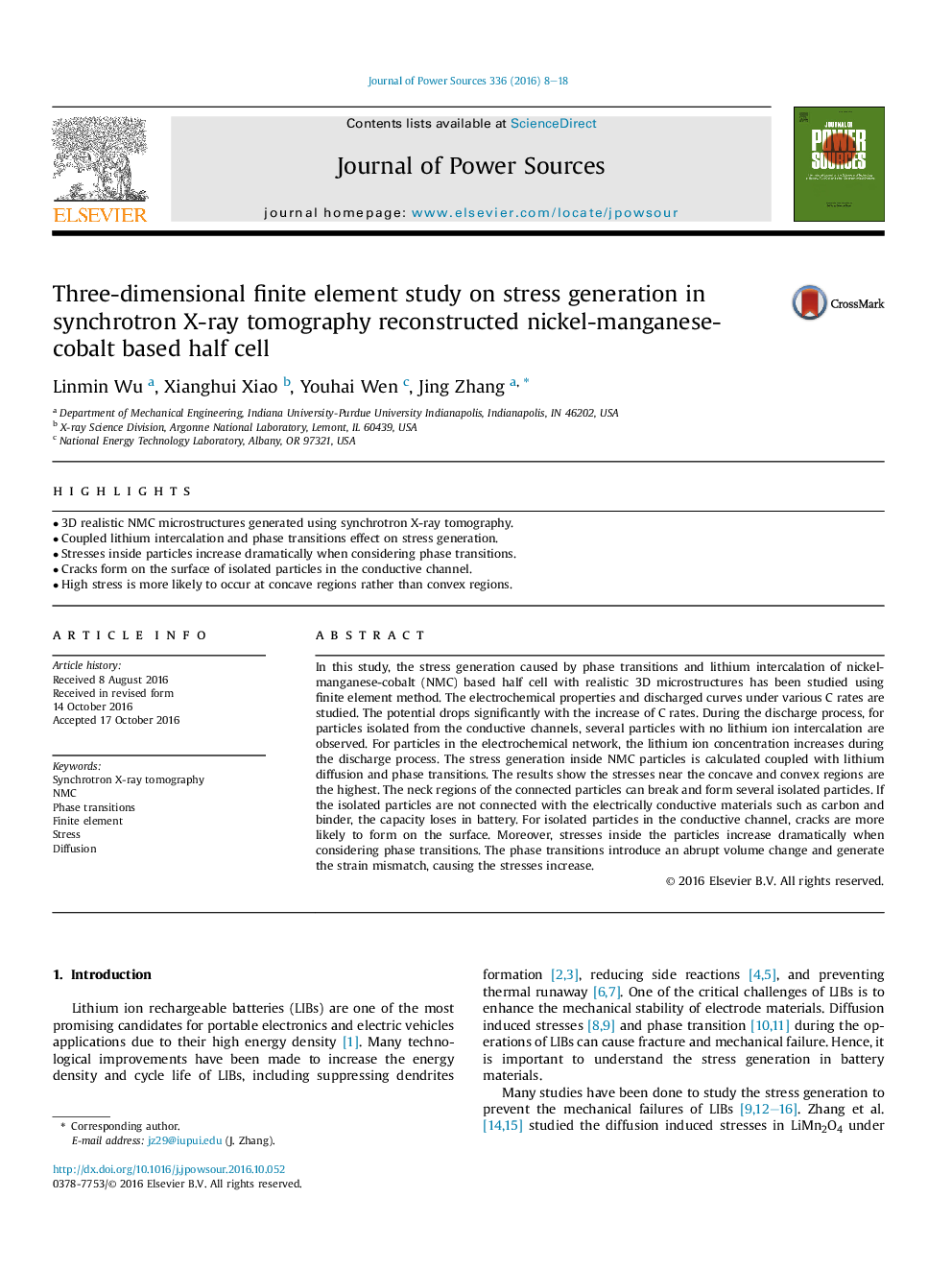| Article ID | Journal | Published Year | Pages | File Type |
|---|---|---|---|---|
| 5149930 | Journal of Power Sources | 2016 | 11 Pages |
Abstract
In this study, the stress generation caused by phase transitions and lithium intercalation of nickel-manganese-cobalt (NMC) based half cell with realistic 3D microstructures has been studied using finite element method. The electrochemical properties and discharged curves under various C rates are studied. The potential drops significantly with the increase of C rates. During the discharge process, for particles isolated from the conductive channels, several particles with no lithium ion intercalation are observed. For particles in the electrochemical network, the lithium ion concentration increases during the discharge process. The stress generation inside NMC particles is calculated coupled with lithium diffusion and phase transitions. The results show the stresses near the concave and convex regions are the highest. The neck regions of the connected particles can break and form several isolated particles. If the isolated particles are not connected with the electrically conductive materials such as carbon and binder, the capacity loses in battery. For isolated particles in the conductive channel, cracks are more likely to form on the surface. Moreover, stresses inside the particles increase dramatically when considering phase transitions. The phase transitions introduce an abrupt volume change and generate the strain mismatch, causing the stresses increase.
Related Topics
Physical Sciences and Engineering
Chemistry
Electrochemistry
Authors
Linmin Wu, Xianghui Xiao, Youhai Wen, Jing Zhang,
